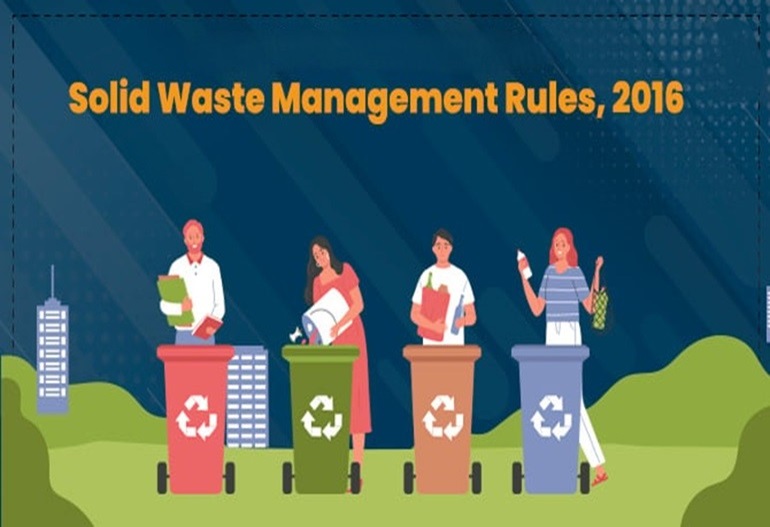What is a Materials Recovery Facility (MRF)?
A Materials Recovery Facility (MRF) is a specialized plant where solid waste is received, separated, and processed into recyclable and reusable materials. The primary objective of an MRF is to recover valuable materials such as plastics, paper, metals, and glass, which can then be reintroduced into manufacturing industries. By doing so, MRFs reduce the volume of waste going to landfills and minimize the environmental impact of waste mismanagement.
Simply put, MRFs act as the backbone of modern recycling systems. They provide the infrastructure and technology required to separate recyclables from mixed waste streams, ensuring maximum material recovery and reducing the demand for virgin raw materials.
Types of Materials Recovery Facilities
There are mainly two types of MRFs based on the waste they handle:
1. Clean MRF
o Processes pre-sorted recyclable materials collected directly from households, offices, or businesses.
o The waste received is usually “clean,” meaning that contaminants and non-recyclable items are minimal.
o Clean MRFs have a higher efficiency rate since less sorting is required.
2. Dirty MRF
o Handles unsorted municipal solid waste (MSW).
o Separates recyclables from general waste through mechanical and manual sorting techniques.
o Though less efficient compared to clean MRFs, dirty MRFs ensure that even waste streams without pre-segregation still contribute to recycling efforts.
How Does a Materials Recovery Facility Work?
1. Collection and Delivery: Waste materials are collected from households, businesses, and industries and delivered to the MRF.
2. Initial Sorting: Waste is spread out on conveyor belts where oversized or non-recyclable items are manually removed.
3. Mechanical Separation: Various machines such as shredders, trommels (rotating screens), air classifiers, and magnets are used to separate different types of waste.
4. Manual Sorting: Workers manually remove contaminants or materials that machines cannot identify.
5. Compacting and Baling: Recovered materials like paper, plastic, and metals are compressed into bales for easy transport and sale to recycling industries.
6. Final Disposal: Residual non-recyclable waste is sent to landfills or waste-to-energy plants.
Benefits of Materials Recovery Facilities
1. Environmental Sustainability
MRFs reduce the dependency on landfills, which emit greenhouse gases like methane and leach harmful substances into soil and water. By recovering recyclables, MRFs contribute to reducing pollution and conserving natural ecosystems.
2. Resource Conservation
Recycling materials through MRFs decreases the demand for virgin raw materials like timber, metals, and petroleum-based products. This helps conserve natural resources for future generations.
3. Energy Savings
Manufacturing products from recycled materials consumes significantly less energy compared to producing from raw materials. For instance, recycling aluminium saves up to 95% of the energy required for producing new aluminium.
4. Economic Opportunities
MRFs create jobs in waste collection, sorting, processing, and recycling industries. Additionally, the sale of recovered materials generates revenue for municipalities and businesses.
5. Compliance with Regulations
Many governments and municipalities have introduced strict regulations for waste management and recycling. Having an MRF in operation helps industries and urban bodies meet legal compliance.
6. Supports Circular Economy
MRFs enable the shift from a linear economy (take-make-dispose) to a circular economy, where materials are continuously reused, recycled, and reintegrated into the production cycle.
Role of MRFs in Smarter Waste Management
A smarter waste management system is one that is sustainable, efficient, and technologically advanced. MRFs form an essential part of this vision:
• Integration with Smart Cities: MRFs support smart city initiatives by providing a scientific approach to handling waste.
• Data-Driven Operations: Advanced MRFs use sensors, AI, and IoT to track waste flows, optimize recovery rates, and improve efficiency.
• Public Awareness: The presence of MRFs promotes awareness about segregation, recycling, and sustainable living among citizens.
• Waste-to-Energy Linkage: Non-recyclable residues from MRFs can be directed to waste-to-energy plants, ensuring zero waste to landfill.
Future of Materials Recovery Facilities
The future of MRFs lies in technology-driven advancements and sustainable practices:
• Automation and Robotics: Use of robotic arms and AI-powered sorting systems for better accuracy.
• Advanced Optical Sorting: Identifying even complex plastics and composite materials.
• Integration with Circular Economy Models: Collaboration between industries and MRFs for direct reuse of recovered materials.
• Digital Tracking: Blockchain and IoT technologies for material traceability from waste generation to recycling.
• Public-Private Partnerships: Greater collaboration between governments, private companies, and communities to make MRFs financially sustainable.
Final Thought
A Materials Recovery Facility (MRF) is far more than just a waste processing plant – it is a pillar of sustainable development. By recovering, recycling, and reusing valuable resources, MRFs play a crucial role in reducing landfill dependency, conserving energy, and driving the circular economy.
For cities and industries aiming to adopt smarter waste management practices, investing in MRFs is not just an option but a necessity. With technological innovations and increased public participation, MRFs can truly transform waste into wealth and pave the way for a greener, more sustainable future.









Get In Touch
Plot No. 81, Sector 05, IMT Manesar, Gurgaon, 122051
info@kirimawasu.com
+91 98122 41001
Quick Links
© kirimawasu. All Rights Reserved.



